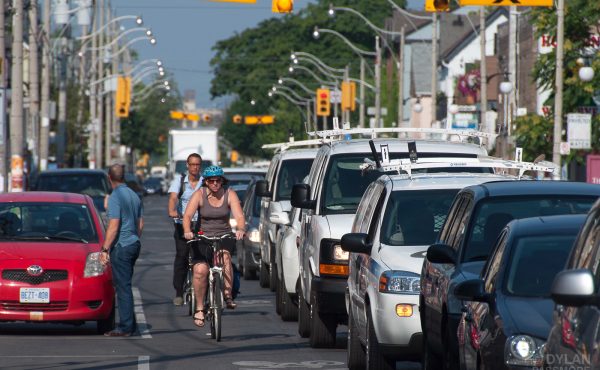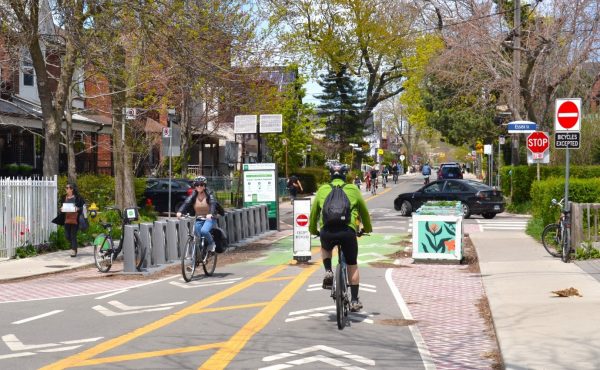There’s a little something for both the cycling aesthete and her/his inner planning nerd over at The Sightline Institute’s blog. As someone who now regularly tows a two year-old behind him on his bike, I’m looking at how my bike fits in our streets in a whole new way and they’ve posted a couple of great (and pretty) think-pieces.
First up is a brilliant half-hour film by New York-based StreetFilm on what makes Portland so bike-friendly (it’s 30 minutes, but worth the watch — you gotta love the all-way stop traffic signal triggered by a bike riding on top of a pad).
But Portland is blown away by Copenhagen, which is probably the most bike-friendly city in the developed world. And it’s not by accident, as you can see in the “elegantly illustrated” picture book on how to build a cycling city (pdf) that they’ve posted by University of Washington planner Alyse Nelson (but who is also affiliated with the aptly named Centre for Public Space Research in Copenhagen).
The big-picture stuff won’t be new to most cycle-planning fans, but it’s the gorgeous pictures and really detailed diagrams on how to integrate parking, bike lanes, pedestrians and (oh yeah, can’t forget about them) cars that make this worth a read.
And maybe even worth sacrificing a (Forest Stewardship Council-certified) tree in order to print a few copies for City of Toronto traffic planners and developers.




5 comments
Thanks for this posting. I’ve spent alot of time in Copenhagen, experienced their cycling infrastructure and it WORKS! If you notice in the picture book, the Danish system provides car parking lanes to the left of the cycling lane. So here’s my question: Why is it that when I suggested that change here in Toronto, that so many people were against the idea claiming it to be dangerous one. If it works in Cph, why would it not work here in Toronto?
In Denmark they have a “five finger plan”, based on the idea that the public should have easy access to infrastructural facilities such as commuter train lines, bicycle paths, and motorways so they can enjoy and live close to nature as well have easy access to the city centre.
In Toronto we have a “middle finger plan” which is to tell everyone who gets in your way to f*ck off.
Re Shaun’s comment . . . Ha! Unfortunately, too true.
Another good ref for Copenhagen is Copenhagen City of Cyclists linked on bikelanediary. Yes, it puts us to shame.
Katrina – Do you mean that we should have bike lanes put between the sidewalk and the lane of parked cars? Those kinds of lanes exist in Montreal on Berri, Cherrier, Rachel, etc. In some places they work; but on many other streets they put cyclists in greater danger. Cyclists end up being hidden from view (of drivers) by the lane of parked cars. It becomes really scary at corners when cars want to turn left or right. Even if they looked for them, drivers might not be able to see if a bike is coming.
Maybe it works in Copenhagen because driver-cyclist-pedestrian etiquette is different, or because the rules of the road are different. It makes me wonder how much of city’s success depends on its physical structure or plan and how much depends on the attitudes/ideology/concerns of the citizens.